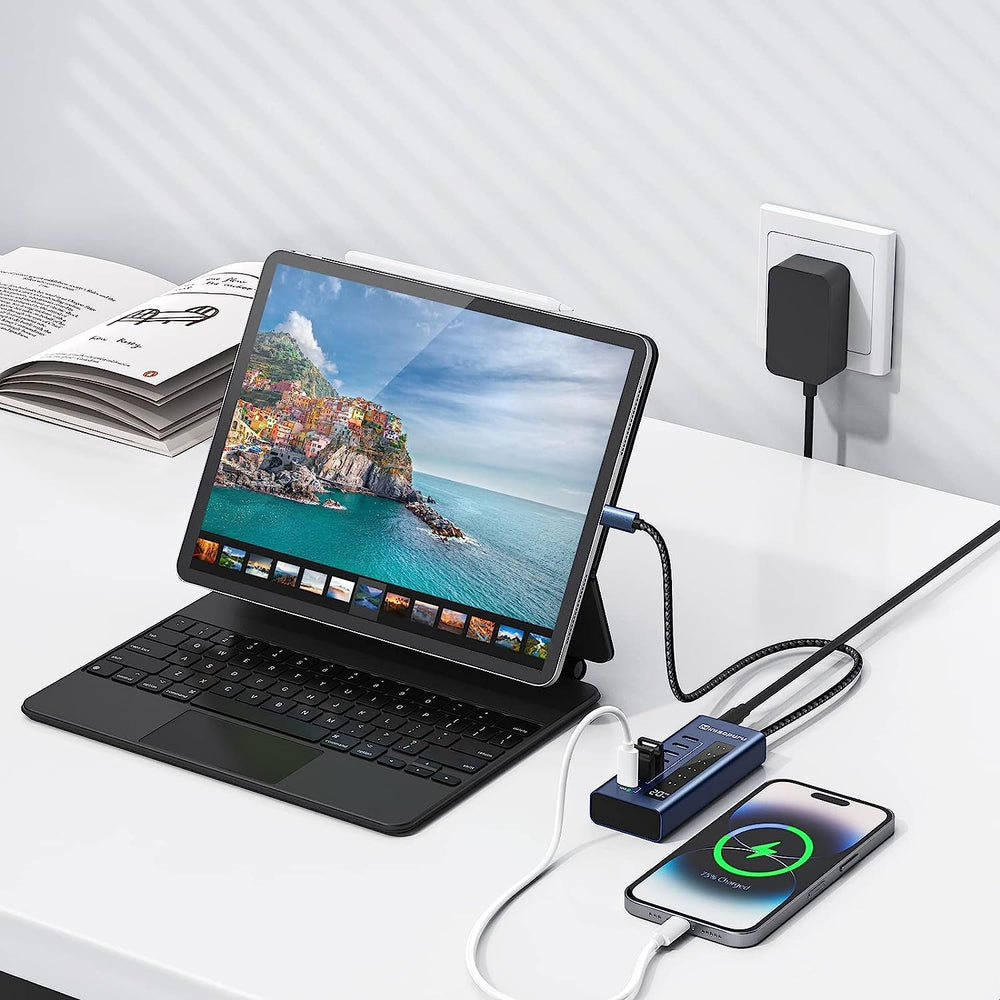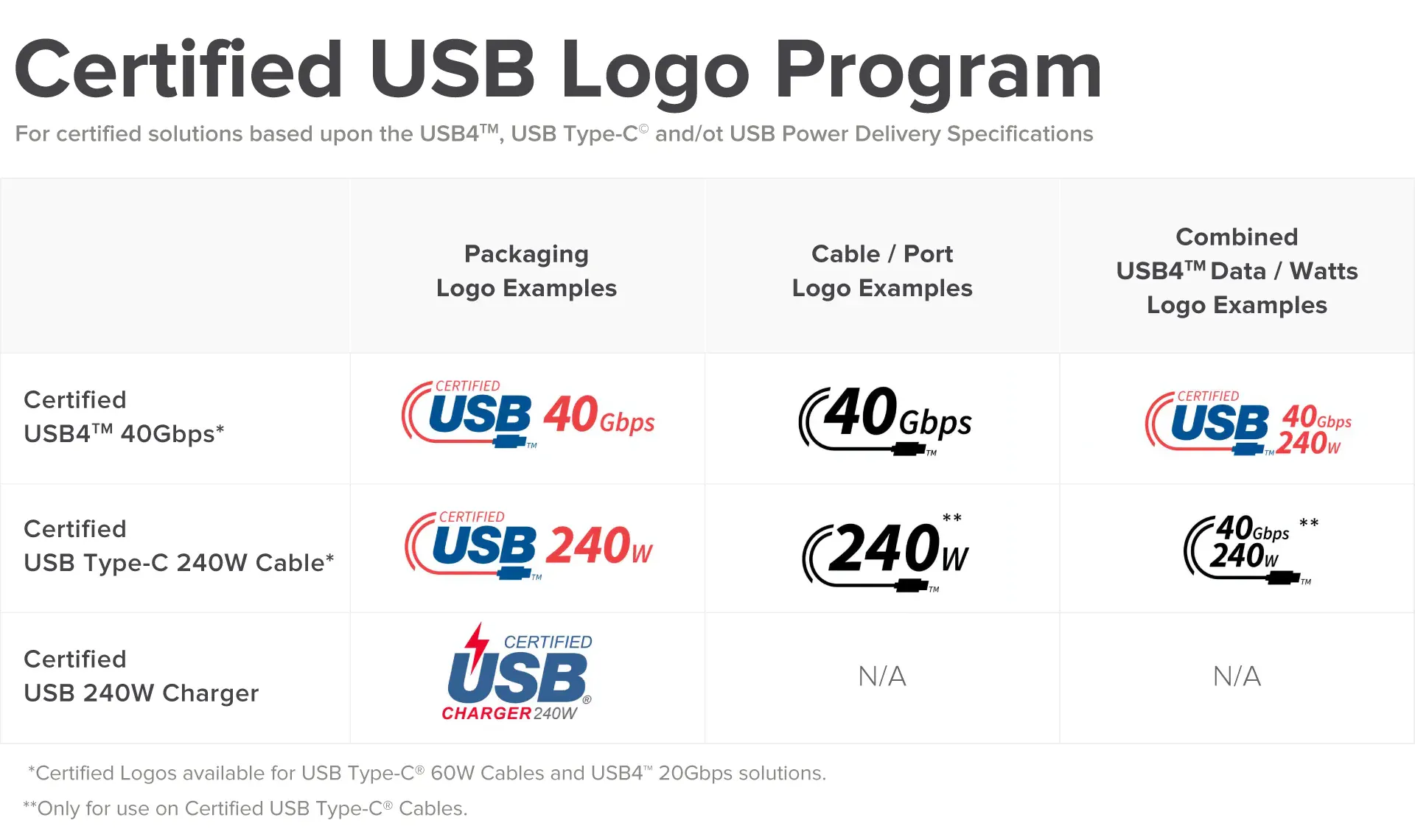We frequently receive inquiries about whether it is safe to keep a notebook computer connected to our USB-C docking stations with Power Delivery for extended periods. The answer is yes, it is no different from leaving the laptop connected to the original USB-C power supply provided by the manufacturer.
For modern laptops, there is no issue with leaving them connected to the docking station for extended periods. However, for older laptops from the 1990s to the early 2000s, it may be advisable to consider the different battery technologies used in those devices.
Another common question is whether it is possible to use the docking station without powering and charging the computer. We recommend always powering the computer when using a desktop docking station because when a modern notebook computer operates on battery power, it may enter a reduced power state that can affect performance or connected devices. Disabling power and charging will not affect the lifespan of the computer's battery when using our docking stations that provide power to the host computer.
The lifespan of a rechargeable battery depends on factors like age, temperature history, charging patterns, chemical composition, and usage. For example, batteries stored at full charge degrade faster than those stored at around 50% charge. That's why most consumer electronics devices come with a charge level between 25% to 75% when shipped from the manufacturer.
While lithium-ion batteries are consumable components, they are generally not user-serviceable in modern computers, cell phones, and tablets. These devices typically include battery charge and protection circuits. These circuits can be simple, charging the battery at preset rates based on the charge level to maintain battery life, or sophisticated software-controlled systems that monitor battery temperature, voltage, and current draw to optimize charging speed while preserving battery longevity.
Modern notebook computers can be safely left connected to the original power cable or a charging-capable docking station for extended periods. They do not require regular discharge and recharge cycles. Our docking stations with charging capability utilize USB Type-C Power Delivery, which is a negotiated charging protocol between the host computer and the docking station or USB Type-C power supply. This allows the computer to draw only the necessary power and select the appropriate voltage level for optimal performance. Combined with a computer's built-in battery charging controller, it can maintain the battery's optimal state even when continuously connected to a power source.
Unlike lithium-ion batteries, NiCad and NiMH batteries generally do not have smart charging controllers. To extend their lifespan, it was recommended to "train" these batteries by fully discharging and recharging them periodically. For instance, many laptop manufacturers suggested fully charging and discharging a new laptop battery 2-3 times to optimize its performance. However, this practice is not necessary with modern laptops.
Batteries are consumable components and naturally degrade over time. However, modern notebook computers are designed to extend the battery life, often matching or exceeding the lifespan of the computer's other electronic components.
For modern laptops, there is no issue with leaving them connected to the docking station for extended periods. However, for older laptops from the 1990s to the early 2000s, it may be advisable to consider the different battery technologies used in those devices.
Another common question is whether it is possible to use the docking station without powering and charging the computer. We recommend always powering the computer when using a desktop docking station because when a modern notebook computer operates on battery power, it may enter a reduced power state that can affect performance or connected devices. Disabling power and charging will not affect the lifespan of the computer's battery when using our docking stations that provide power to the host computer.
Modern Laptop Batteries: Lithium-Ion
Lithium-ion (Li-ion) batteries are commonly used in various consumer electronics, including notebook computers, cell phones, electric cars, power tools, and wearable devices like wireless earbuds. They offer advantages such as fast charging, high-current discharging, relatively long service life compared to other rechargeable battery technologies, and affordability.The lifespan of a rechargeable battery depends on factors like age, temperature history, charging patterns, chemical composition, and usage. For example, batteries stored at full charge degrade faster than those stored at around 50% charge. That's why most consumer electronics devices come with a charge level between 25% to 75% when shipped from the manufacturer.
While lithium-ion batteries are consumable components, they are generally not user-serviceable in modern computers, cell phones, and tablets. These devices typically include battery charge and protection circuits. These circuits can be simple, charging the battery at preset rates based on the charge level to maintain battery life, or sophisticated software-controlled systems that monitor battery temperature, voltage, and current draw to optimize charging speed while preserving battery longevity.
Modern notebook computers can be safely left connected to the original power cable or a charging-capable docking station for extended periods. They do not require regular discharge and recharge cycles. Our docking stations with charging capability utilize USB Type-C Power Delivery, which is a negotiated charging protocol between the host computer and the docking station or USB Type-C power supply. This allows the computer to draw only the necessary power and select the appropriate voltage level for optimal performance. Combined with a computer's built-in battery charging controller, it can maintain the battery's optimal state even when continuously connected to a power source.
Legacy Laptop Batteries: NiCad and NiMH
Older laptops from the 1990s and early 2000s, as well as certain consumer electronics and rechargeable AA or AAA battery replacements, often used Nickel-Cadmium (NiCad) or Nickel-Metal Hydride (NiMH) batteries. These batteries have slower charging and discharging capabilities compared to lithium-ion batteries. They require simple charge controllers and can even be trickle-charged (charged with a very low current) if desired.Unlike lithium-ion batteries, NiCad and NiMH batteries generally do not have smart charging controllers. To extend their lifespan, it was recommended to "train" these batteries by fully discharging and recharging them periodically. For instance, many laptop manufacturers suggested fully charging and discharging a new laptop battery 2-3 times to optimize its performance. However, this practice is not necessary with modern laptops.
Conclusion
Modern notebook batteries are equipped with built-in battery charging circuits that require minimal user intervention to maintain optimal battery health. Leaving the computer connected to an external power supply does not harm the battery, as long as the computer is being regularly used. However, if the computer is going to be stored for an extended period, it is recommended to discharge the battery to a level between 50-75% to help preserve its lifespan.Batteries are consumable components and naturally degrade over time. However, modern notebook computers are designed to extend the battery life, often matching or exceeding the lifespan of the computer's other electronic components.


